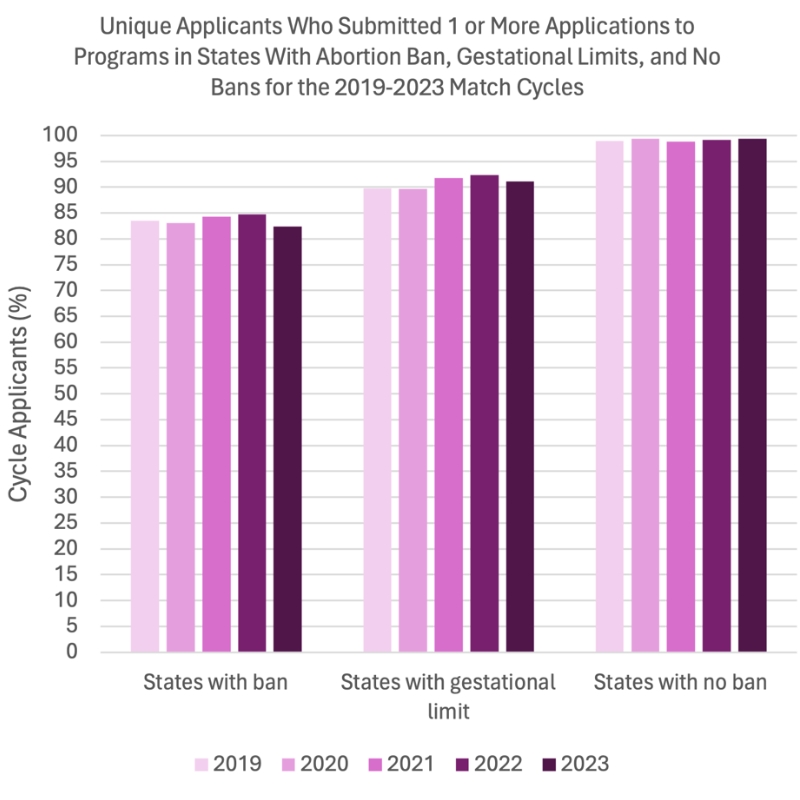Charting Change: OBGYN Residency Post-Roe
Following the Dobbs decision, OBGYN residency applications in states with abortion bans and gestational limits decreased.

Read Time: 2 minutes
Published:
The Dobbs v Jackson Supreme Court decision on June 24, 2022, overturned the constitutional right to legal, safe abortions. The decision provided states with the autonomy to implement abortion policies as they see fit. A key concern following Dobbs has been the potential impact on the 44% of obstetrics and gynecology (OBGYN) residents who train in states with abortion bans and restrictions.
At the beginning of their fourth year of medical school, students apply to residency programs to specialize in their training following graduation. Residency applications are open during September and October each year. The 2023 residency application cycle started less than three months after the Dobbs decision, at which point 11 states had enacted full abortion bans and six states had enacted gestational limits.
To assess how Dobbs might have influenced applications to OBGYN residencies, Maya M. Hammoud and colleagues compared the percentage of medical students applying to residency in states with abortion bans, gestational limits to abortion, and no bans. They examined the application cycles before (2019-2022) and after (2023) the Dobbs decision. Using data from the Association of American Medical Colleges Electronic Residency Application Service, they analyzed trends in residency program applications over these periods.

The graph above illustrates a slight decrease in residency applicants in states with bans in 2023 (82.4%) compared to the previous year (84.7%). A similar decrease was observed in states with gestational restrictions. Comparatively, there was no change in applications in states without bans.
Although the percentage decrease between residency match cycles may appear minimal, any decline raises worries about Dobbs’ impact on OBGYN residency training and the ability of future practicing physicians to perform this medically important procedure. Given more time and as more states pass abortion policies – both to protect and limit abortions – differences between states may become more pronounced.
Many of the states with full or partial abortion bans currently have fewer OBGYNs. If such declines in trainees in these states continue, physician shortages may occur, exacerbating challenges in accessing health care providers. States must prepare for shifts in physician numbers as their legislators or voters change their abortion policies.
Databyte via Maya M. Hammoud, Helen K. Morgan, Karen George, et al. Trends in Obstetrics and Gynecology Residency Applications in the Year After Abortion Access Changes. JAMA Network Open, 2024.



